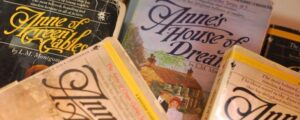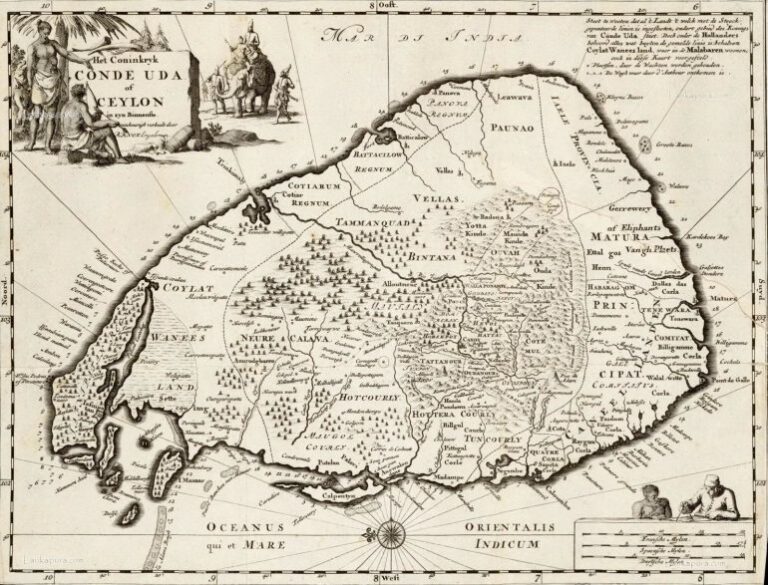Looking for Anne of Green Gables in Prince Edward Island

In June of 2008, I took an “Anne-tastic” tour, as one website put it, of Prince Edward Island, home of Lucy Maud Montgomery, author of Anne of Green Gables. This summer, on another June day, I head back to PEI. It seems appropriate that both of my visits have been in June, the month in which much of Anne of Green Gables is set—more than half the plot, Montgomery scholar Irene Gammel points out.
On my first visit, I was working on my book about rereading childhood favorites and visiting tourist sites related to them. In Putnam, Connecticut, no one I’d talked to had heard of Gertrude Chandler Warner or the Boxcar Children books or had any idea why there was a boxcar-turned-museum planted smack downtown. At some Laura Ingalls Wilder sites, tourists were familiar with the TV show but hadn’t read the books. But when my daughter and our friends and I visited PEI, we found a place that took visible pride in its connections to Montgomery’s work.
Cars bore license plates with a picture of Anne’s face, a green-gabled house in the background, and the logo, “Home of ‘Anne of Green Gables.’” There was a cabin complex called “Kindred Spirits” and another called “Bosom Buddies,” a Lake of Shining Waters Amusement Park, Bright River Café, Marilla’s Pizza, Green Gables Keepsakes, the Anne Shirley Motel and Cabins, Ingleside Lodge, the Green Gables Bungalow Court, and Matthew’s Market. “Some young islanders grow up believing that Anne really existed and are disappointed when they first learn that Anne, like Santa Claus, is fictional,” writes Montgomery scholar Elizabeth Epperly.
Throughout Cavendish, the model for Montgomery’s fictional Avonlea, there was a dizzying array of Anne-related sites and activities. You could tour the homes where Montgomery was conceived, spent her childhood, boarded while teaching, visited relatives, and got married, now offering weddings patterned after Montgomery’s. There were museums, historic sites, tourist recreations of the fictional town of Avonlea, and gift shops selling Anne of Green Gables coloring books, cookbooks, press-out model houses, plates, giftwrap, mousepads, postcards, books, woodcuts, jigsaw puzzles, clocks, and birdhouses; t-shirts, sweatshirts, and hats, though, disappointingly, none like the ones once sold at Canadian World in Japan that said, “Anne of Green Gapole.” Anne’s image was everywhere, along with images of white houses with green trim.
“The ideal consumer,” writes Jeanette Lynes, “will find little amiss in seeing a CD-ROM or a computer mousepad in an old-fashioned country store, or a ninety-dollar doll based on a literary character who was a penniless orphan.” And everywhere we went, we ran into Anne. Anne’s Chocolates sold “Diana’s Berries,” “raspberry cordial,” and “PE Eyes”—Chocolate peanut butter cup eyes with dark chocolate pupils. Even when we thought we’d briefly escaped Anne, we found a portrait of her at the Ripley’s museum painted on a grain of rice.
On this summer’s trip, I’m seeking out Anne from a new angle, attending the bi-annual Lucy Maud Montgomery conference in Charlottetown. In Canada, Montgomery studies are a respectable branch of English studies, not relegated to the margins as “Children’s Literature” as often happens in the U.S. Participants come from Canada, Finland, Germany, Ireland, Japan, Slovakia, Sweden, and the U.S.
Speakers discuss the influence of the Bronte sisters’ work on Montgomery, particularly Jane Eyre; the gendered implications of gender-neutral pen names; the significance of white feathers during World War I; and attitudes toward child labor at the turn of the nineteenth century. They highlight the continuing relevance of Montgomery’s work, making connections between the landscape and imagination, memoir and fiction, Magic for Marigold and Queer Theory, Anne of Green Gables and 50 Shades of Gray, Rilla of Ingleside and Downton Abbey, sexual awakening and rose gardens.
On a cloudless afternoon following a morning of presentations, my daughter and I drive along curvy roads through a green countryside blooming with purple lupins to Cavendish Beach, where the ocean and sky are an impossible powder blue. Children jump waves, wade in tide pools, and turn their parents into sand mermaids while I reread Montgomery’s Blue Castle, intrigued by the allusions to Tennyson’s “Lady of Shalott” mentioned by one presenter.
Then I turn to keynote speaker Jane Urquhart’s biography of Montgomery, remembering how, years ago on this beach, after being inundated by images of Anne all day, we constructed our own absurd-looking Anne in the sand with gray rocks for her eyes and red rocks for her mouth and braids. I thought of our organic Anne as something between a tribute to Anne the character and a caricature of Anne as commodity.
Now, with the fading light, the ocean’s powder blue darkens to navy, and with the sunset, green and yellow and red as the tide washes in over the red dirt. “The west was a glory of mingled hues, and the pond reflected them in still softer shadings,” Montgomery writes in Anne of Green Gables. I remember how, on our previous visit, a quote from Anne’s House of Dreams seemed to describe my own walk along the “fine surf. . . .dashing on sand and rock in a splendid white turmoil—the only restless thing in the great, pervading stillness and peace.”
Although there are few beach or ocean scenes in most of the Anne books, despite all of the academic discussions and tourist attractions and merchandise, I appreciate Montgomery’s writing most now as I walk along the beach, remembering how Anne says of the ocean in House of Dreams, “Tonight it seemed so free—so untamed—. Something broke loose in me, too, out of sympathy.”


